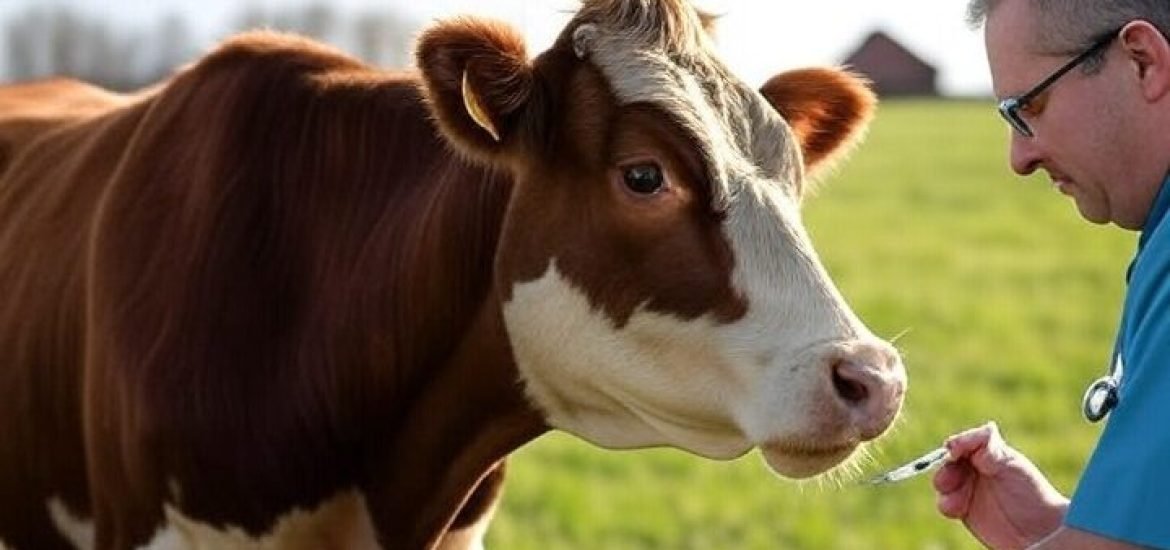
In the fight against a growing global health threat, there is a glimmer of hope.
New figures from the State of the World’s Animal Health report show that the use of antimicrobials, including antibiotics, in animals is down five per cent globally – a critical step in reducing the phenomenon of drug-resistant bacteria known as antimicrobial resistance, or AMR.
Nevertheless, AMR continues to pose a significant threat to both animal and human health. Left unchecked, it threatens to claim tens of millions of lives, jeopardise food security for more than two billion people, while the spread of resistant pathogens from livestock to humans, could cause global cumulative GDP losses up to US$ 5.2 trillion by 2050.
This latest report shows where progress is possible to curb the “silent pandemic” of drug resistance. But countries must act now to improve animal health – starting with phasing out the use of antibiotics for growth promotion.
As international agencies work towards a new Global Action Plan on AMR for 2026, countries should be proactively putting resources behind animal disease prevention measures, viewing these as an investment in their future public health, food security and economic stability.
Despite overall reductions, there remains room for improvement in terms of reducing overuse and misuse of antimicrobials in veterinary medicine and in human medicine in many parts of the world. These practices are undermining progress in the fight against AMR.
Misuse of Antibiotics in Veterinary Practices
Regarding veterinary medicine, for example, in some countries, antimicrobials are being delivered without any medical prescription “over the counter”. In other countries they are still used as growth promoters, added to animal feed or water to speed up weight gain and improve feed efficiency. This constant low-level exposure to antibiotics encourages bacteria to develop resistance over time, increasing the risk of AMR. Despite WOAH discouraging this practice, over 20 per cent of countries report doing so.
Particularly concerning is the use of “last-resort” antibiotics – colistin, enrofloxacin, and fosfomycin – which are crucial in treating severe or multi-drug-resistant human infections like pneumonia. Meanwhile, other animal health interventions like biosecurity, good nutrition, deworming and vaccination can support healthy development, meaning farmers do not need to use antibiotics for this purpose.
Antibiotics are also commonly given to animals suffering from viral infections — despite the fact that since antibiotics only work on bacteria and not viruses, they are not effective in curing the disease or helping the animals get better. This unnecessary use increases the likelihood of resistant bacteria emerging, while doing nothing to treat the actual illness.
Vaccination and Prevention as Key Solutions
The question now is: how do we continue the downward trend in antimicrobial use, while meeting rising global demand for animal source foods?
The answer lies in better animal health. Investing in animal disease prevention – through vaccination alongside other welfare and biosecurity measures – reduces the need for antibiotics in the first place. This, in turn, protects human health and preserves the effectiveness of life-saving medicines.
For example, by preventing viral illnesses, widespread vaccination helps farmers to avoid misdiagnoses and inappropriate antibiotic use, preserving their effectiveness against bacterial infections and mitigating AMR. Meanwhile, overall illness also eases healthcare burdens and minimises disease outbreak costs, leaving room for farmers to spend more on other health-promoting measures.
Healthier animals also reach their full growth potential, which reduces the perceived need to use antibiotics as growth promoters. Good animal care, including proper nutrition, clean water and hygiene, biosecurity measures, adequate housing, and vaccination help ensure livestock reach their potential without risk-laden shortcuts.
Innovative Technologies and Global Commitment
Finally, investing and improving access to precise antibiotic delivery systems offer a targeted and efficient way to meet animal health needs. Emerging technologies such as microencapsulation offer a precise delivery of nutrients or therapeutics directly, which reduces the need for broad-spectrum antibiotics and therefore the latent risk of AMR. In addition, innovation efforts, such as those outlined in the STAR-IDAZ roadmaps (1), are focusing on alternative therapies to antimicrobials, including immunomodulators, bacteriophages, and probiotics. Advancements in fast diagnostics and antibiotic susceptibility testing also play a crucial role in ensuring more accurate and responsible antimicrobial use in veterinary settings.
With rising global demand for meat, milk and eggs – projected to increase 38 per cent (2) globally and up to 300 per cent (3) in some regions by 2050 – it is becoming more critical by the day that we correct poor practices around antibiotics. As demand rises, so does the pressure to produce more animals faster, which often leads to higher antibiotic use to prevent disease in crowded conditions or to boost growth.
The recent UN General Assembly declaration on AMR (4) underscores the scale of the danger it poses to public health, food systems, and economies.
But to translate that welcome recognition into real-world action and to deliver on the urgency of global action emphasised by that declaration, countries must prioritise improvements in animal health.
This begins with a strong, fully-funded animal health workforce, well-designed vaccination programmes, and thorough biosecurity plans. Because healthy animals do not need antibiotics, and without the misuse of antibiotics, drug resistance is no longer a threat to global health.
(1) https://www.star-idaz.net/priority-topic/amr-and-innovative-alternatives-to-antibiotics/%23reports
(2) https://www.sciencedirect.com/science/article/pii/S0959378021001229
(4) https://press.un.org/en/2024/ga12642.doc.htm
Further reading
Without a clear animal vaccination strategy, the next outbreak could be a disaster
“Cows were here before the combustion engine” Juan Pascual (Interview)
“If you don’t have metabolic health, you don’t have anything” Robert Lustig (Interview)
This post is also available in: FR DE